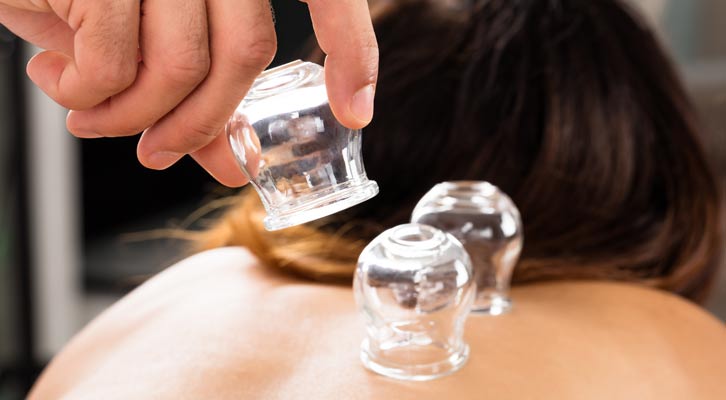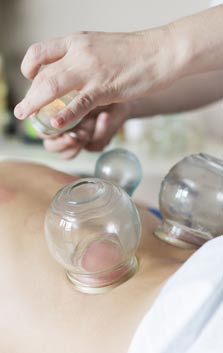Cupping Acupuncture NYC by Marc Bystock L.Ac.
"As one of the more recent revivals of ancient Chinese medicine, cupping is becoming an authoritative source of treatment for a variety of ailments. It is a safe, useful, and often relaxing procedure with significant effect."
-Marc Bystock L.Ac.
Contact Marc Bystock, Leading Holistic Acupuncturist in NYC for a Free Consultation.
CONTACT MARC
VERIFY YOUR HEALTH INSURANCE
Cupping Acupuncturist in Midtown Manhattan NY 10016
Many forms of alternative medicine have originated in China and made it to the west in recent decades. Some catch on as a temporary fad, while others pass quickly into the realms of forgotten knowledge. One recent addition to the Chinese imported medicine portfolio is known as cupping.
The History of Cupping
Cupping is referred to in modern times as an ancient Chinese form of medicine. However, that may not be strictly accurate. The versions of cupping found in use today came from China, but the practice may not have originated there. The earliest known record of cupping is in a medicinal textbook from 3,500 years ago. References to cupping in this text mention it as an Egyptian practice. Throughout the centuries, virtually every culture, including Islam and China, have performed the method.
What is Cupping?
At its most basic form, cupping is the application of suction using a cup, typically on the back. In ancient times, individual cups were made from horn, ivory, or bamboo. In modern times, these cups may be used, but often newer cups made from glass or silicone are used instead. These cups all have some mechanism for providing suction. Old cups from Finland use a valve mechanism and manual air removal. Modern cups may include small manual pumps. Fire is also used, creating a pocket of hot air that, as it cools, provides suction. This practice is known as fire cupping.
Once the cup is applied and secured via suction, it is left in place for several minutes. The art and science of cupping come from the positioning of the cups. Much like acupuncture, cupping targets specific meridians along the human body to elicit certain effects.
Types of Cupping Acupuncture
- The most basic type of cupping is known as dry cupping and involves nothing more than cups and suction. Often the cups have suction mechanisms built-in, allowing the physician to apply them without the need for external aid.
- The second type of cupping is a variety of dry cupping called fire cupping. In this variety, fire is used to heat the interior of the cup to lower the density of the air inside. As the air cools, it creates negative pressure, providing suction without the need for valves or pumps.
- The third type of cupping is known as wet cupping. In this process, the cups are applied as usual and left for several minutes. They are then removed, and a small scalpel is used to create superficial incisions in the swollen skin. This ritual bloodletting gives the treatment extra potency for the relief of low back pain and other ailments.
Thankfully, as a medical procedure, cupping has very few risks. Dry cupping leaves red marks on the affected skin, but these are rarely painful. Occasionally, strong suction leaves deeper bruises. Again, these are seldom painful, but they tend to last for some time.
Fire cupping for low back pain can, on rare occasions lead to minor burns. When this is the case, it is likely because of an untrained practitioner being incautious with their materials. Cupping on its own is very safe.
Wet cupping carries the risk of minor pain, due to the incisions made in the skin. Also, as with any procedure that breaks the skin, there is always a small chance of infection. However, as long as the practitioner cares for their equipment correctly, this risk is minimal.
Contact NYC Acupuncturist Marc Bystock L.Ac. for Cupping Treatments
As one of the more recent revivals of ancient Chinese medicine, cupping is becoming an authoritative source of treatment for a variety of ailments. It is a safe, useful, and often relaxing procedure with significant effect. If you suffer from one of the many ailments that can be reduced or cured with cupping, it is well worth giving it a try. The process is painless and relaxing.
Please contact me
for a free consultation.
Additional Links







